History Of Money
The earliest forms of money were neither coins nor banknotes like we have today.The Barter system was used at the beguining for thousands of years.This was the mean for exchanging goods and it worked like this,a person have something to trade would go to a market place where other people like him gather and have things to exchange to sell.In order for a transaction to take place that person has to find someone who wants what he have to offer and that other person has to have something acceptable to offer in exchange.To this day that system is still in use in some countries,although primitive but effective since it's still being used to this day.Later in time a variety of objects started to be used in transactions like rice,sea shells,beads,furs,skins and livestock were used as money for trading goods.Then little by little people started to become more and more conscious of rare and precious things found in the earth in nature like gems,silver and gold. In many parts of the world ancient gold was called Electrum(greek word for"White Gold")because it didn't have the color of pure gold since there was silver with it there was a percentage of Silver mixte with the gold.With time a Technic was develloped by the ancient egyptians to seperate the two.The rarities of these two metals gave them their high price and made things much easier for merchants since now they can carry their fortune with them in the forme of pieces of gold and silver.For example if a person have a hurd of 20 cows for instance,it would be much easier to carry 20 pieces of gold in a small bag intead in a pocket then to drag the whole hurd behind him where ever he go.
Tablets have been found which goes back to 3700 years in the Sippar(a ancient babylonian city)ruins along the Eupharates river(In Iraq)which talks about Silver rings that were used as money and these rings started circulating for two millinnia prior to the first coins that were struck.So the history of money is really old and it sure stretch back for thousands of years.Then in around 680 B.C a ancient country of Asia Minor called Lydia (now Turkey) started striking the first so called coins which were crude pieces of precise weight made from electrum and stamped with the figures of mighty animals like lions and bulls as symbols of power of the local authorities .And from then on ideas on coins and coin making started to spread elsewhere.So the invention of portable money "coins" was that of the Lydians.
I have visited "The Louvre museum" in Paris and "The Egyptian Museum" in Cairo,Egypt and from what have seen the ancient egyptians were highly artistic people (please check the pictures below).The things they were able to create with their hands and tools are just breath taking.It's just amazing how evolved their artistic nature was for a 5000 years old people.
PICTURES FROM "THE LOUVRE" IN PARIS AND "THE EGYPTIAN MUSEUM" IN CAIRO,EGYPT
Two limestone sarcophagi(Sarcophagus means "flesh eating" in greek)close to the entrance in the egyptian museum.Sarcophagi made from limestone was beleived to consume the whole body of a dead person in 40 days with the exception of the teeth
This is the famous Tutankhamun throne made up of pure gold
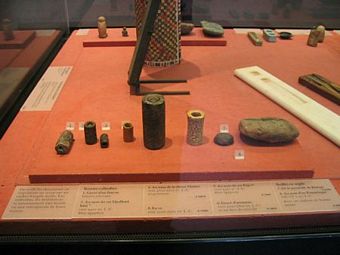 |
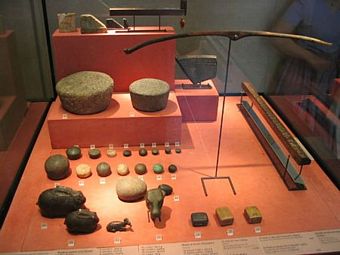 |
Ancient egyptians seals,stamps and weights
Ancient egyptians jewellery.The workmanship of the neckless on the left is just incredible
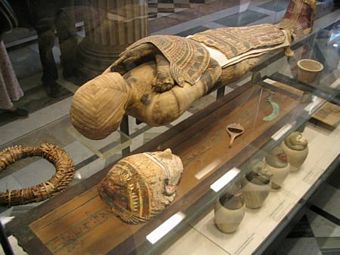 |
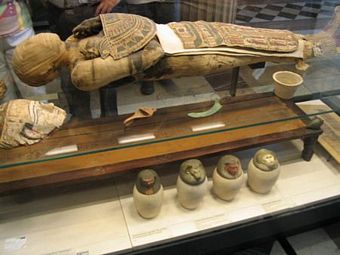 |
A perfectly preserved egyptian mummy from The Louvre Museum.The four jars on the right are called canopic jars and they were used to preserve the lungs,liver,stomach and the intestines which were removed during a mummification.The different lid figures are deities meant to protect the organes in the jars.
I was surprised to see that they even had gloves and sandles which look just like what we have today in our time.
Take a look at these beautifull arches and their arrows on the right.I wounder how these arrows flew though since there's no feathers on the back that stabilize the arrow while cutting through the air.
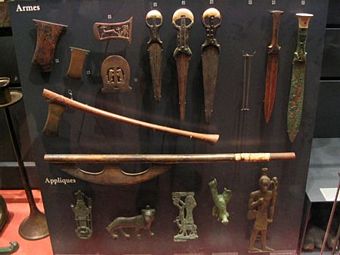 |
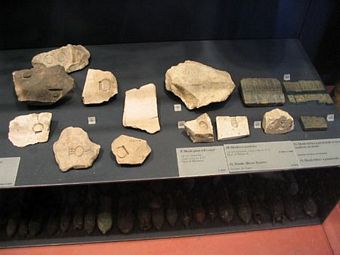 |
Egyptian daggers and axes.Different molds of rings,earings on the right.
This is one of their board games called Sener something like a checkers game.With the difference that the stones they moved brought either good or bad luck.The whites pieces in the front were something of a ancient dice system
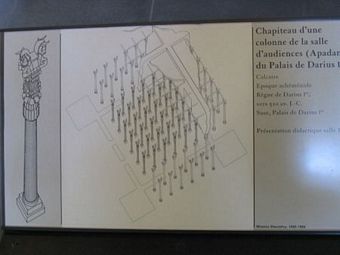 |
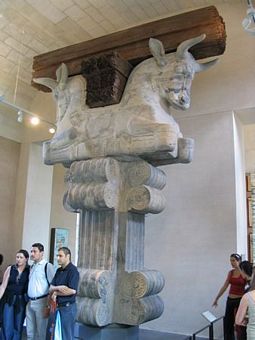 |
This is a map of the gigantic pillars of the Apadana(audience hall)in the city of Persepolis(located in Iran)built by the great persian king Darius I(rulled around 500 B.C).There was around 75 huge columns like the one on the right in this room which was beleived to accommodate around 10000 people.And that pillar on the right is only the top part of one of these pillar the buttom part is missing the whole pillar stood 66 feets high(from The Louvre Museum).
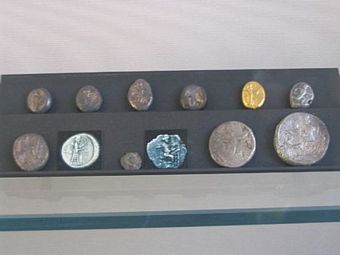 |
These are gold and silver coins of Darius I and of his son Xerxes I also from the Louvre Museum
PICTURES FROM "THE MONEY MUSEUM" IN PARIS And ALSO FROM "NAPOLEON BONAPARTE MUSEUM"
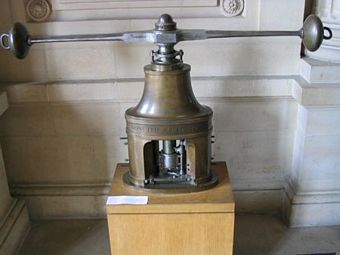 |
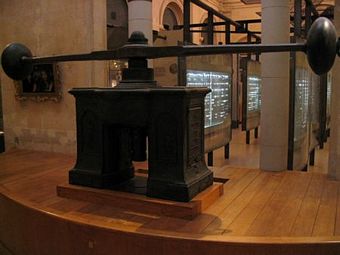 |
Eighten century coins pressing machines which is more like a upside down car jack but istead of lifting the tremondous force is used here to transfer what's carved on the die to the flan or coin below.Many forgers today uses a similer presser to make their fake coins
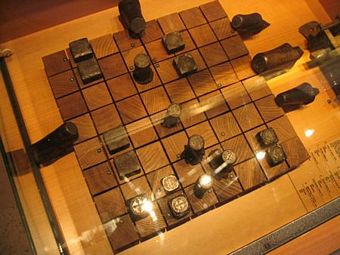 |
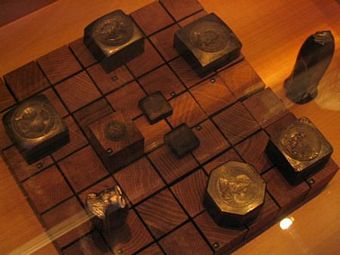 |
Dies from the eighteen or ninetheen century i think.The long nail like dies in the left picture fits(i think if not mistaken)inside the pressing machines like the ones in the above pictures
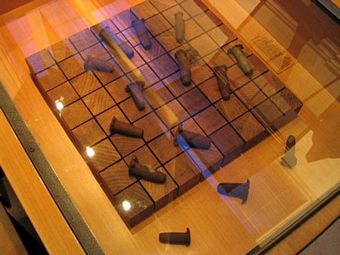 |
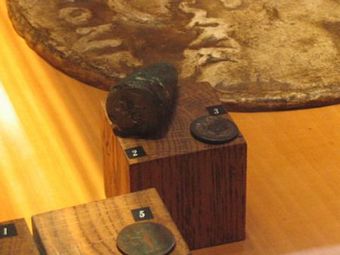 |
These are some of the ancient dies on display in the money museum in Paris.These dies created the reverse side of ancient coins.Ancient coins were hand struck which you can notice the flattening on top of the dies caused by the hammering process.A person would put a not so round piece of copper,bronze,gold or silver on a anvil with the obverse carved right through it then hold one of these dies in the picture on the flan then strike it with a hammer.Creating with that a coin with two different sides
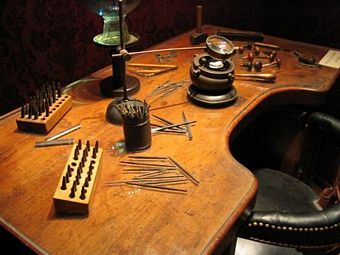 |
A eighteen century diemaster table.This is were dies are born, carved with the help of all these tiny different chisels and files and of course a magnifying glass
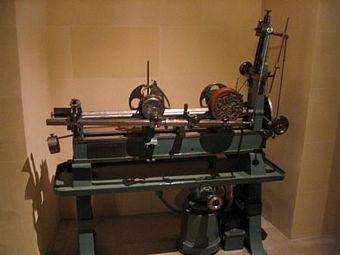 |
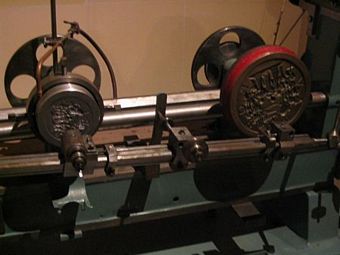 |
A mechanical die engraving machine.The die carving head on the left create a copy of the die on the right by following the curvature of the die with a needle.It's quite like the old phonograph disk where a needle follows the curvature on a disk generating bits of electricity which are then amplified and exited through speakers as music
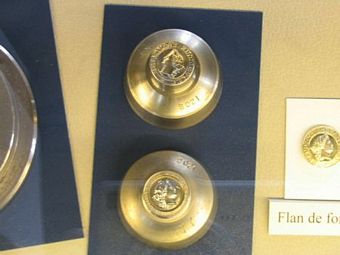 |
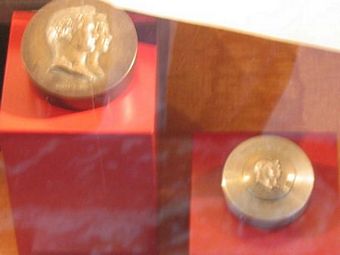 |
These dies are from The Napoleon Bonaparte Musuem which is right next to The Money Museum in Paris.
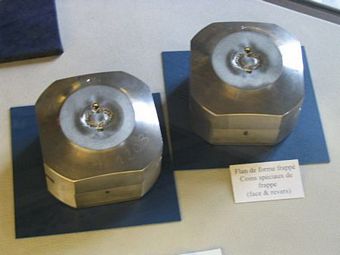 |
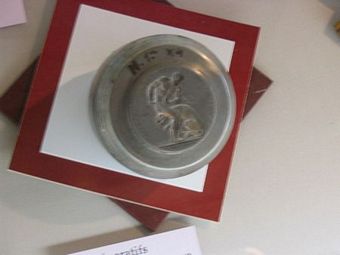 |
More dies from that museum
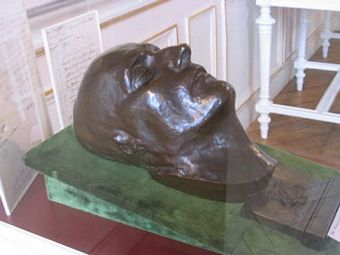 |
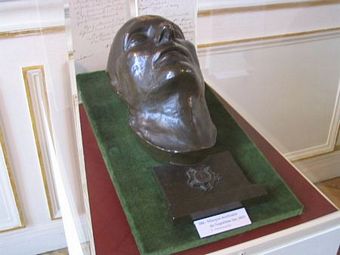 |
This is the death mask of Emperor Napoleon Bonaparte who died by arsenic(supposedly murdered)on st helena island located in the atlantic ocean in 1821.This was his last facial expression captured by the mask